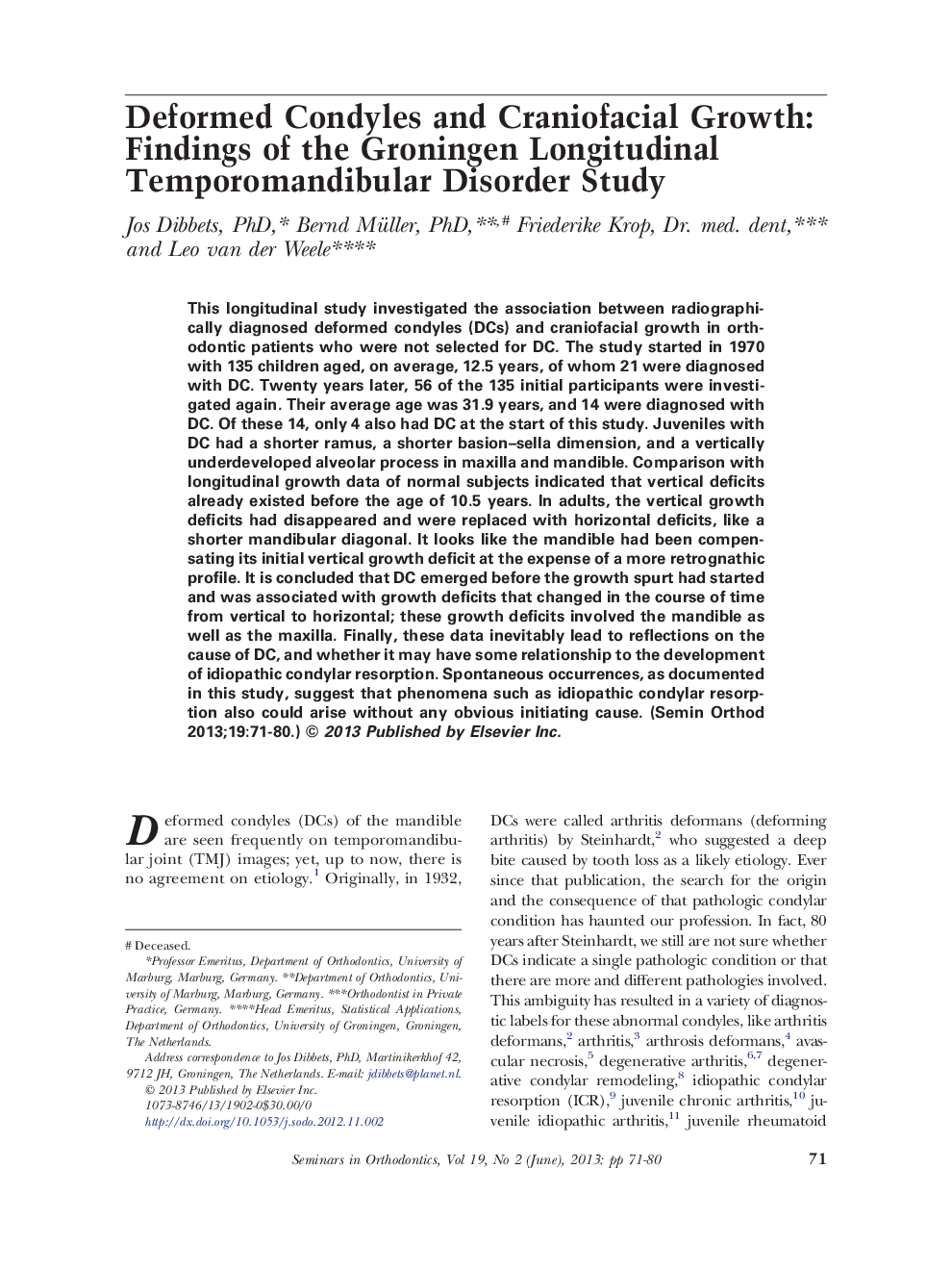| Article ID | Journal | Published Year | Pages | File Type |
|---|---|---|---|---|
| 3175488 | Seminars in Orthodontics | 2013 | 10 Pages |
This longitudinal study investigated the association between radiographically diagnosed deformed condyles (DCs) and craniofacial growth in orthodontic patients who were not selected for DC. The study started in 1970 with 135 children aged, on average, 12.5 years, of whom 21 were diagnosed with DC. Twenty years later, 56 of the 135 initial participants were investigated again. Their average age was 31.9 years, and 14 were diagnosed with DC. Of these 14, only 4 also had DC at the start of this study. Juveniles with DC had a shorter ramus, a shorter basion–sella dimension, and a vertically underdeveloped alveolar process in maxilla and mandible. Comparison with longitudinal growth data of normal subjects indicated that vertical deficits already existed before the age of 10.5 years. In adults, the vertical growth deficits had disappeared and were replaced with horizontal deficits, like a shorter mandibular diagonal. It looks like the mandible had been compensating its initial vertical growth deficit at the expense of a more retrognathic profile. It is concluded that DC emerged before the growth spurt had started and was associated with growth deficits that changed in the course of time from vertical to horizontal; these growth deficits involved the mandible as well as the maxilla. Finally, these data inevitably lead to reflections on the cause of DC, and whether it may have some relationship to the development of idiopathic condylar resorption. Spontaneous occurrences, as documented in this study, suggest that phenomena such as idiopathic condylar resorption also could arise without any obvious initiating cause.
